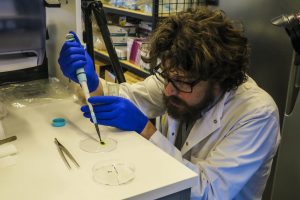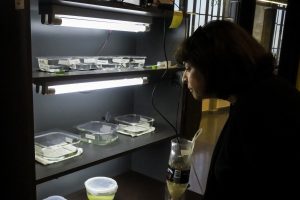
Santiago, Nov 15 (EFE).- Chilean scientist Tomas Egaña on Thursday publicly presented the research whereby he created the first version of photosynthetic skin, which produces and releases oxygen and can help regenerate human tissue.
At the presentation at Chile’s Universidad Catolica, Egaña – who holds a doctorate in human biology and pharmacology – explained that after eight years of analysis and testing with rats, pigs and fish he will now begin the first clinical trials at Santiago’s Hospital del Salvador with 20 patients who have suffered traumatic injuries or illnesses.
“This step, which will last six months, is small but very important to show the safety of the technology.
If we get it to be safe, we’ll be able to apply it to other types of patients and illnesses, including in organ transplants and cancer patients,” Egaña told EFE.
The research, conducted at the Universidad Catolica, led to the development of the first technique for making skin transplants via the implantation of genetically modified microalgae to produce oxygen and thus regenerate the damaged area.
“Ninety percent of the cells in our body are not human. The human body is a true ecosystem where microorganisms and human cells coexist. What we want to determine is what occurs in the body if we implant microalgae that can produce photosynthesis,” Egaña said during his presentation.

Photosynthesis is the process whereby plants break down water molecules using energy from sunlight, thus releasing oxygen, which all living beings on the planet then consume, the Chilean scientist said.
“The big question is what we could achieve if humans were able to reproduce this process within a therapeutic context, since there are many diseases caused by lack of oxygen, such as hemorrhages, heart attacks and large wounds that do not heal,” he added.
The second phase of research will apply the technology to organ transplants to get the organs to live longer outside the body, and in oncological therapies to achieve greater eradication of cancer cells.
The main goal in the first clinical trials will be to avoid patients’ rejection of the skin transplants, and thus the coming six months will be key in determining the possible use of the technique in other medical areas.
